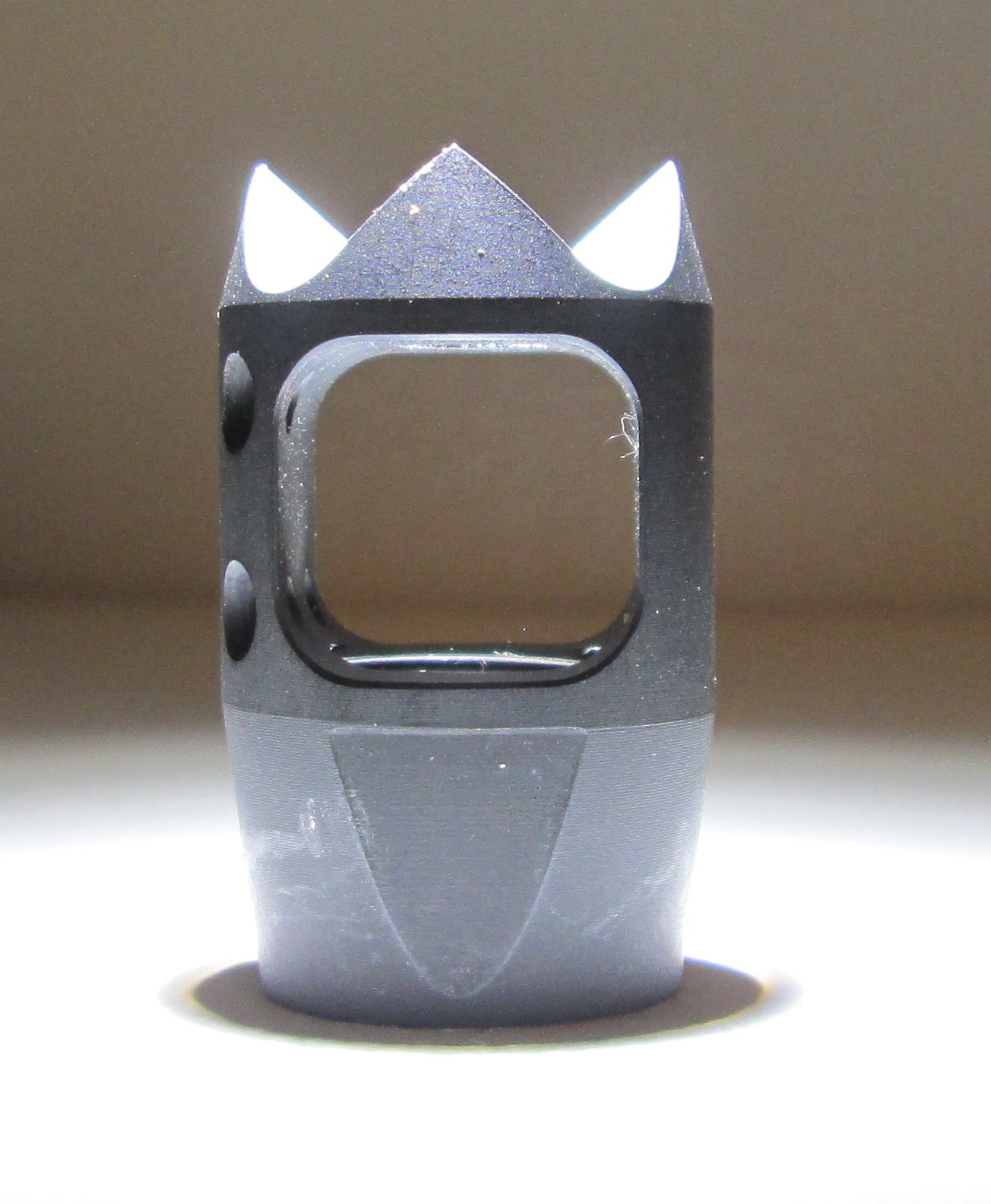A few months ago, I put a Rainier Arms XTC on a medium contoured 16-inch barrel and was very pleased with the results. For the longest time, I thought that the decreased recoil and minimal muzzle rise, when compared to the standard A2, was mostly due to the 7 ounces of extra barrel weight. How very wrong I was.

It was only after Rainier Arms sent me their RMC, or Rainier Mini Compensator, that I began to see the error of my assumptions. The RMC shares many of the same features as the XTC. Both have the large side ports, reminiscent of the AK-47 muzzle brake and are sold at a very price (under $60). Where they differ is that the RMC gets rid of the four flash-hiding prongs. To be honest, I never found these prongs particularly useful. Sure, they eliminated some flash, but a great amount came out the side ports – an inevitable consequence of such a design.
So being a fans of shorter, lighter rifles and carbines, I was delighted to put the RMC on my Spike’s Tactical 5.45 upper. Three rounds into firing, I was impressed. All of the controllablity of my heavier-barreled upper was back in force. I could once again get three rapid, aimed shots into the target at 25 yards in under a second.
 Almost all muzzle brakes are longer than a standard A2 flash hider. The RMC, however, is not. Its short length belies its effectiveness. The openings of the port to either side allow most of the expanding gasses to travel at a right angle away from the weapon, while the small holes in the top of the RMC counteract muzzle rise. Most right-handed shooters experience muzzle rise to the right, and the RMC takes this into account with an extra small port drilled into the top of the brake.
Almost all muzzle brakes are longer than a standard A2 flash hider. The RMC, however, is not. Its short length belies its effectiveness. The openings of the port to either side allow most of the expanding gasses to travel at a right angle away from the weapon, while the small holes in the top of the RMC counteract muzzle rise. Most right-handed shooters experience muzzle rise to the right, and the RMC takes this into account with an extra small port drilled into the top of the brake.
The main drawbacks of muzzle brakes are increased noise and increased muzzle flash – in comparison to a standard A2 flash hider. While the concussion from the RMC is greater than standard, it is less than other designs, such as YHM’s new Annihilator.
The muzzle flash is visible, even in twilight. So yes, I would almost certainly never use either the XTC or the RMC in an extended nighttime firefight. That said, I haven’t been in too many nocturnal running gun battles lately, so that concern is honestly near the bottom of my list.
I don’t mean to demean flash hiders. If I lived in a state which allowed hog hunting after dusk, for example, a flash hider would be a great asset to me, and the RMC could prove a liability, especially if used in conjunction with night vision. However, if you are like me and expend the vast majority of your rounds at paper, this is definitely a product you should look into.
By Allen Cosby
Latest posts by 53gr (see all)
- H&H Medical: H Bandage and Thin H Bandage – January 2, 2020
- S&W M&P M2.0 Series – January 9, 2017
- SIG Sauer P938 – October 19, 2016

Leave a Reply